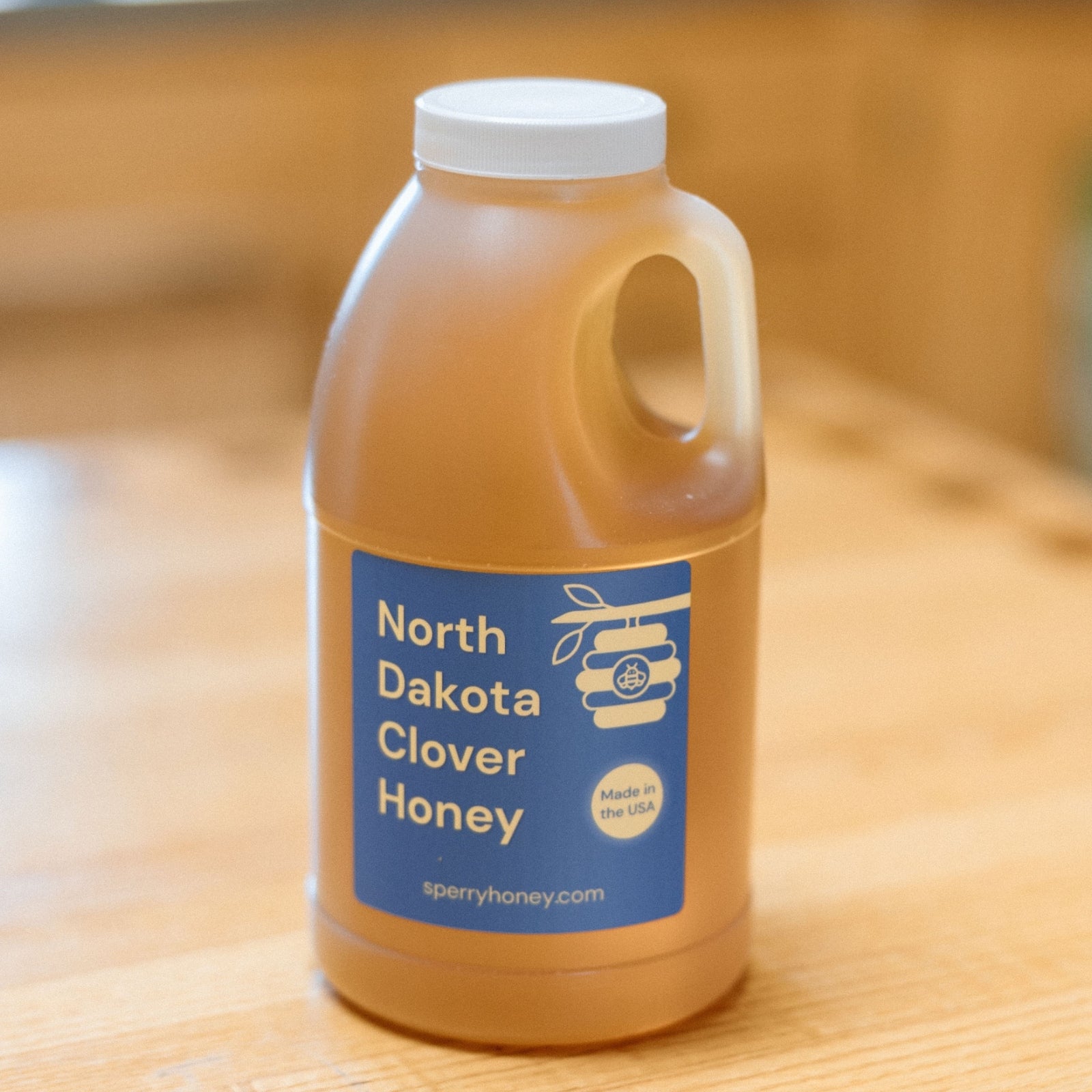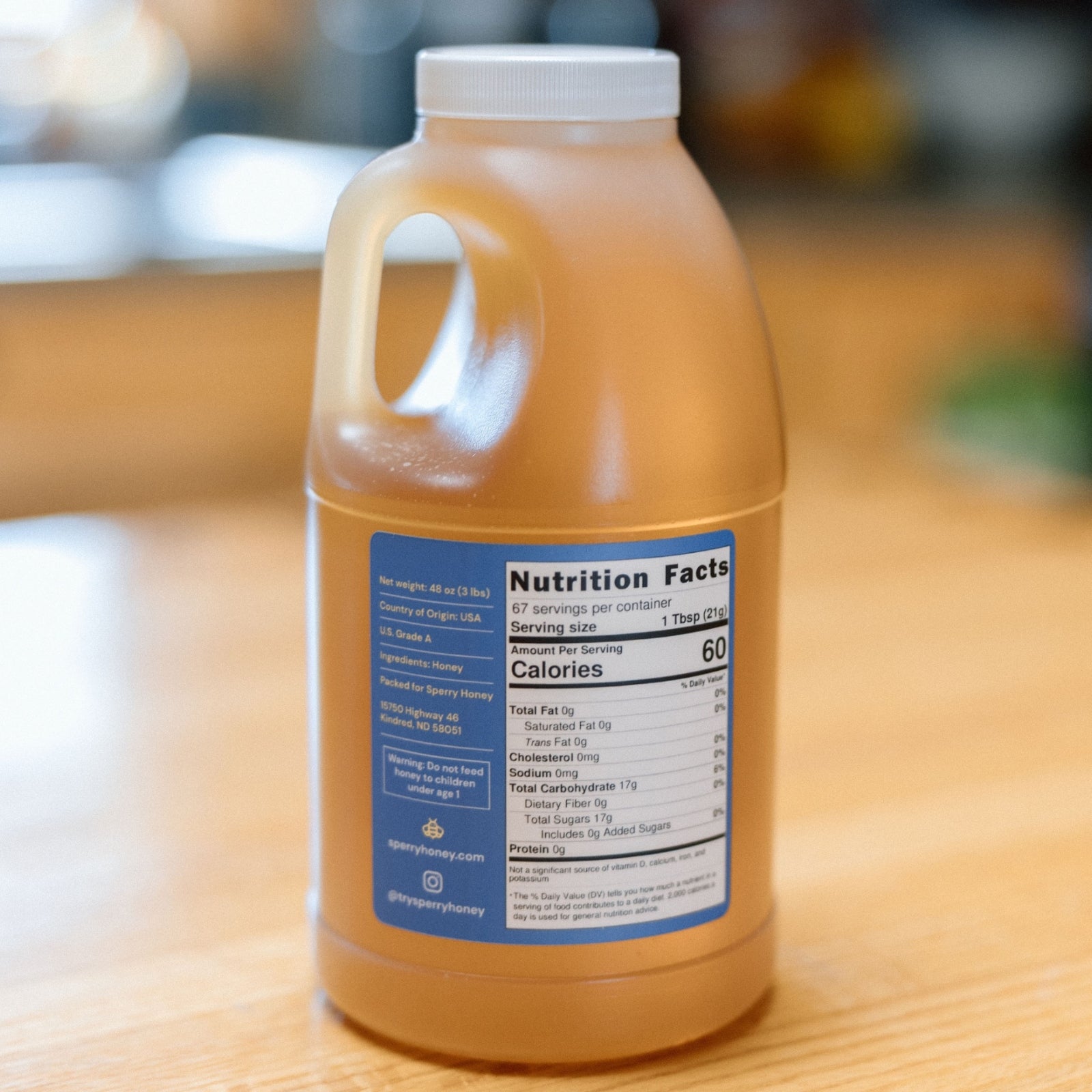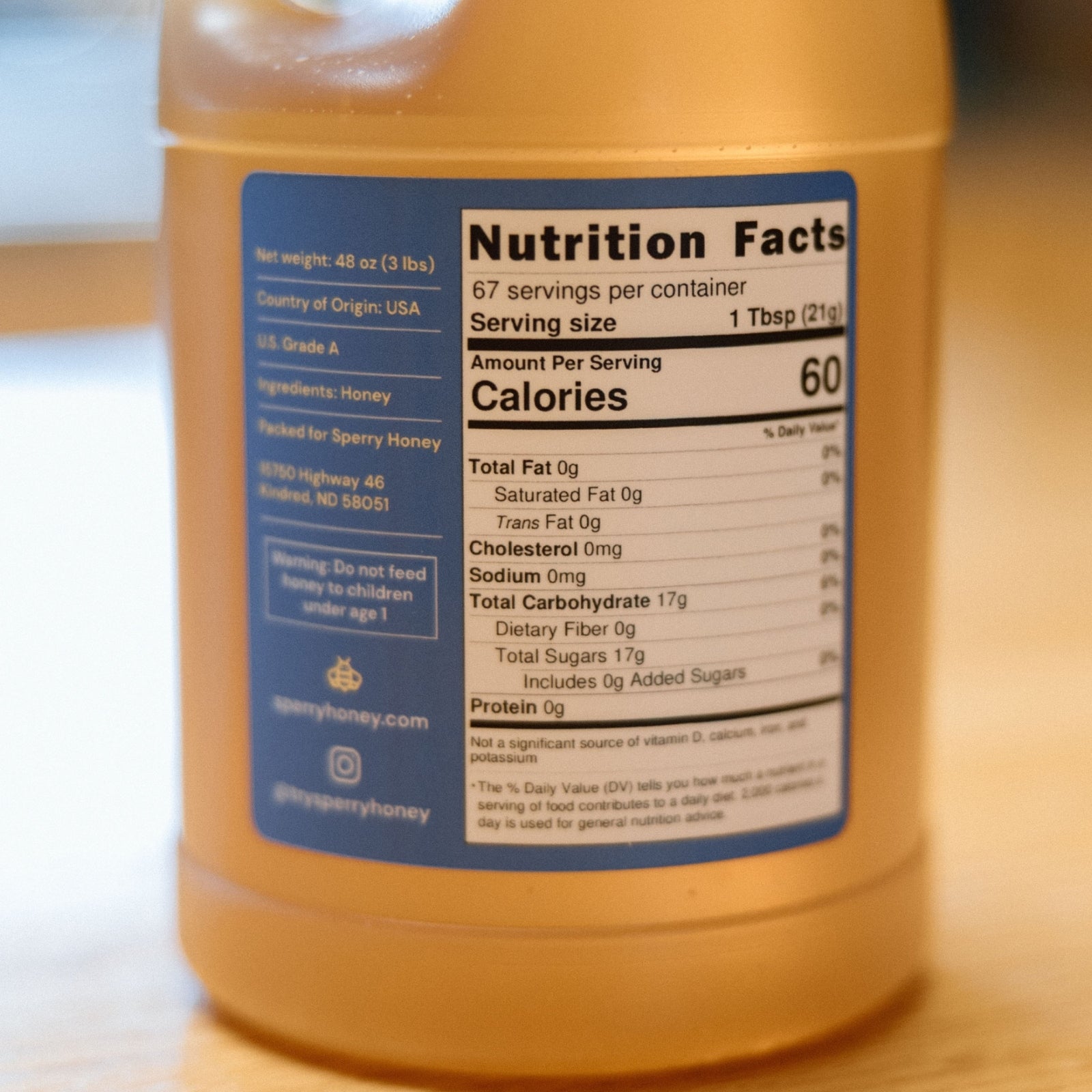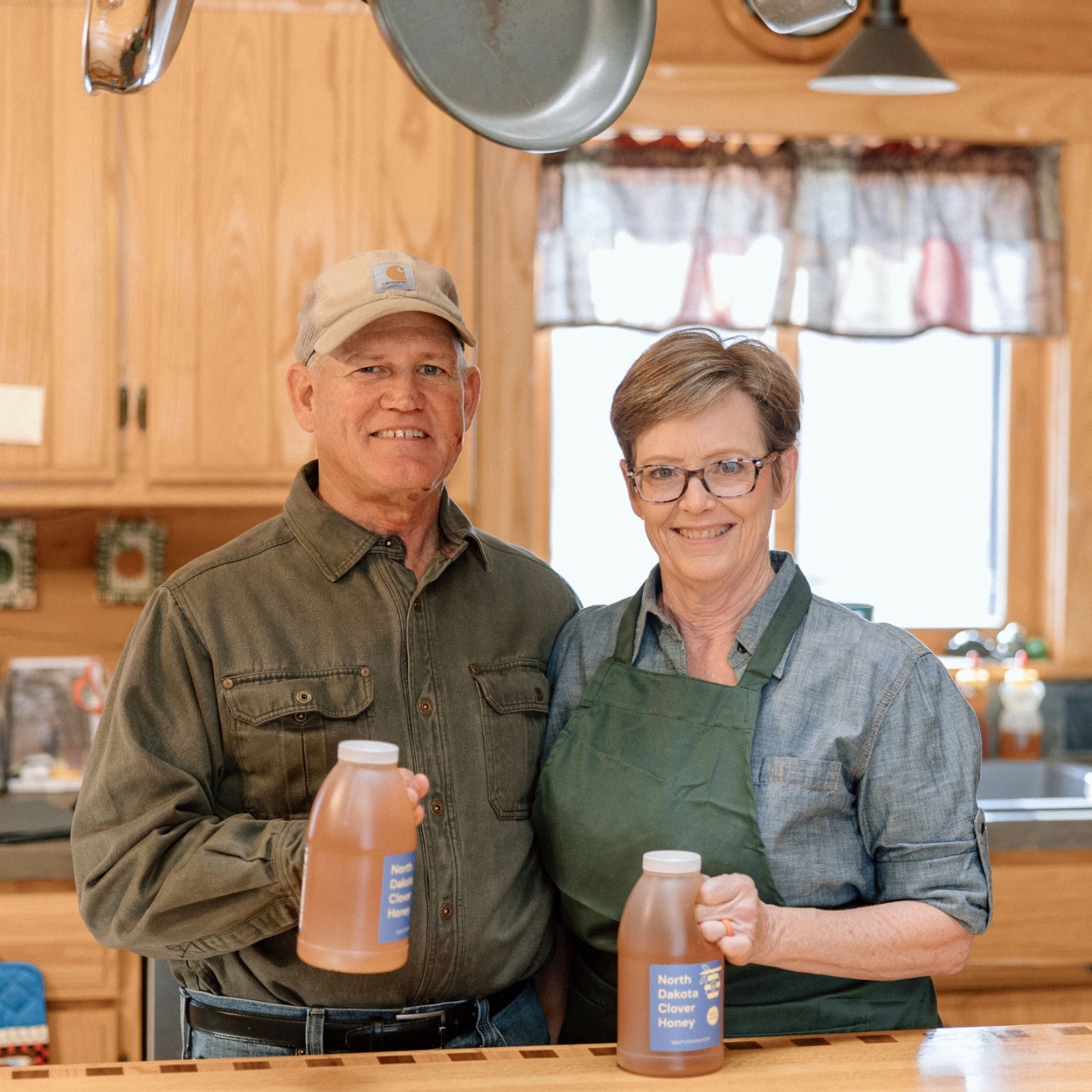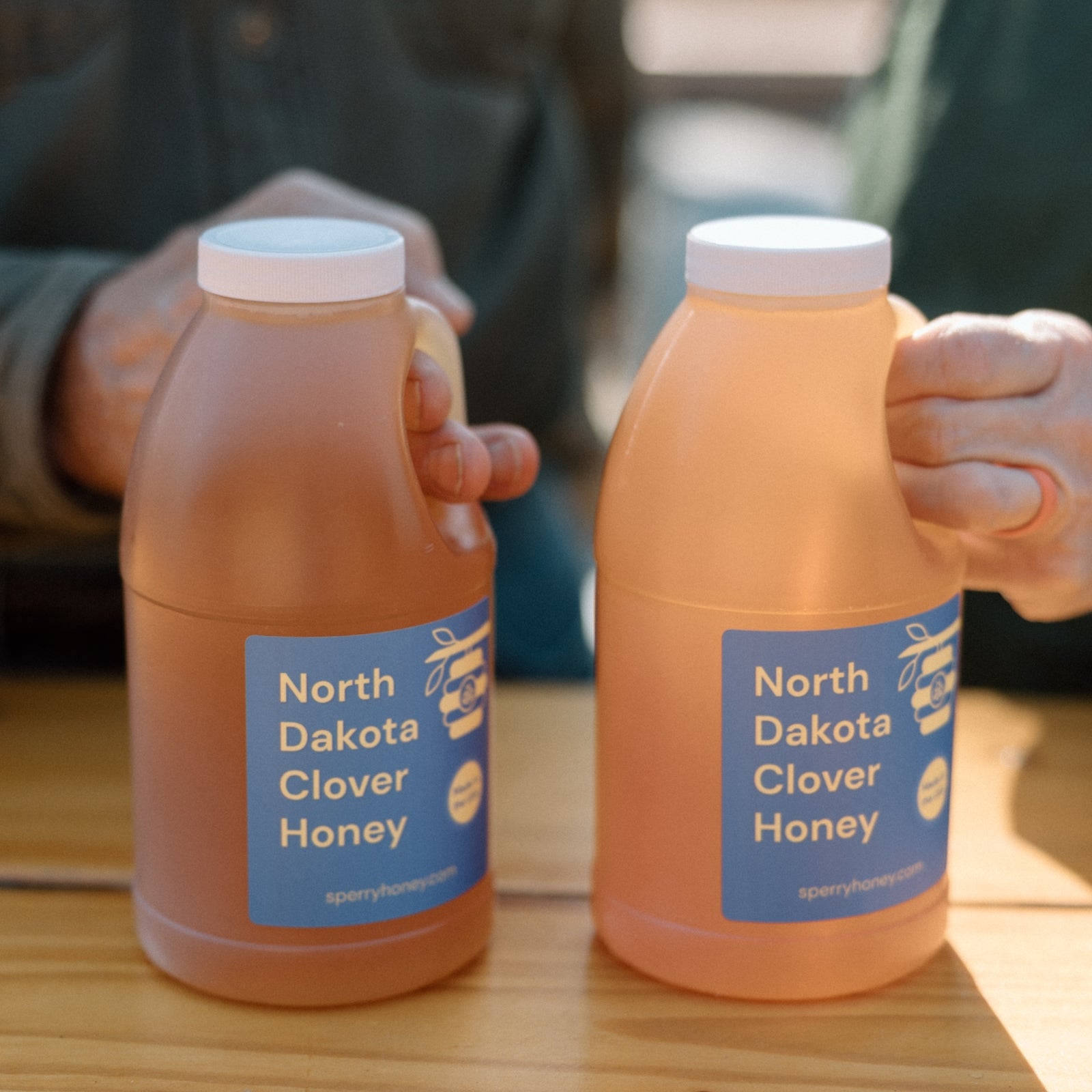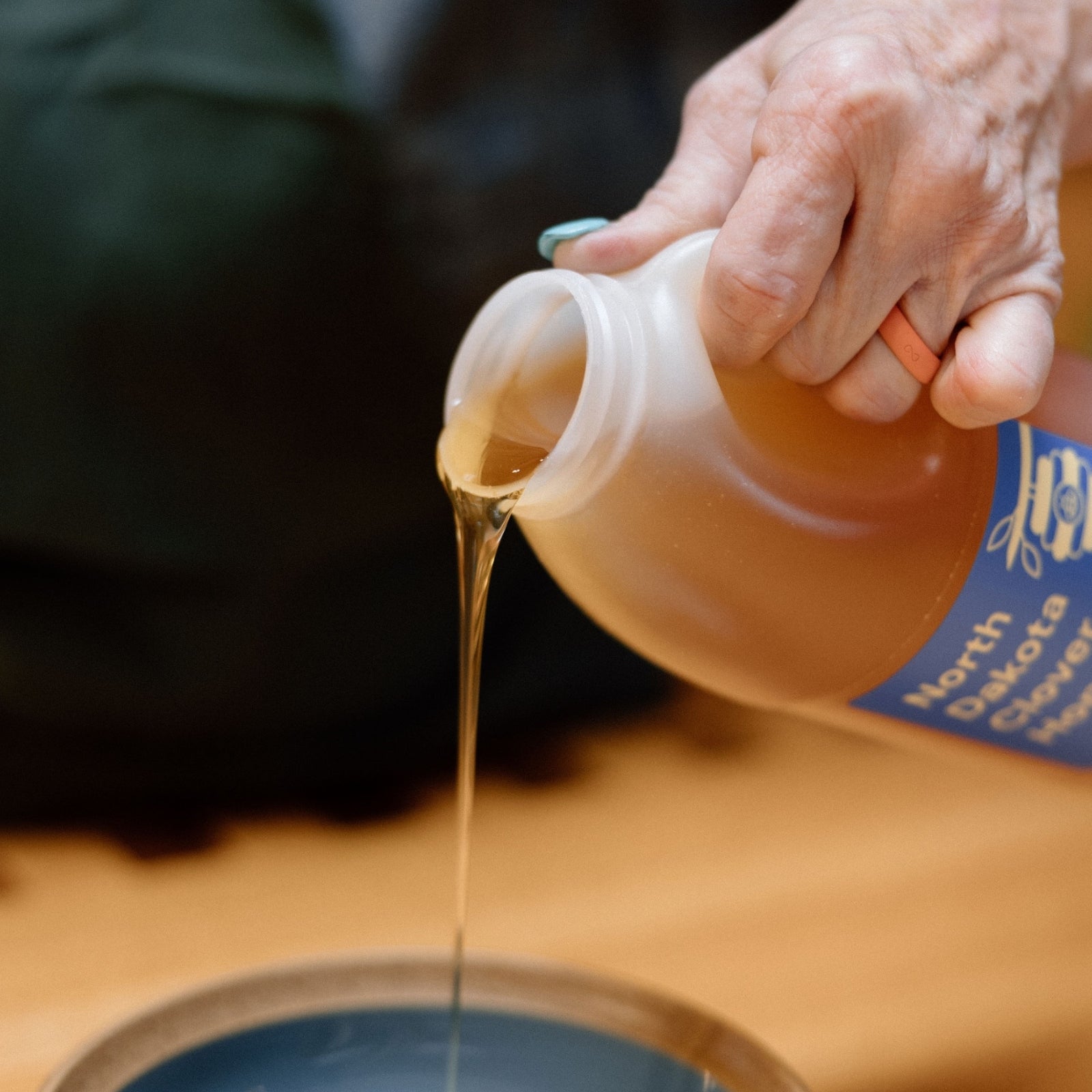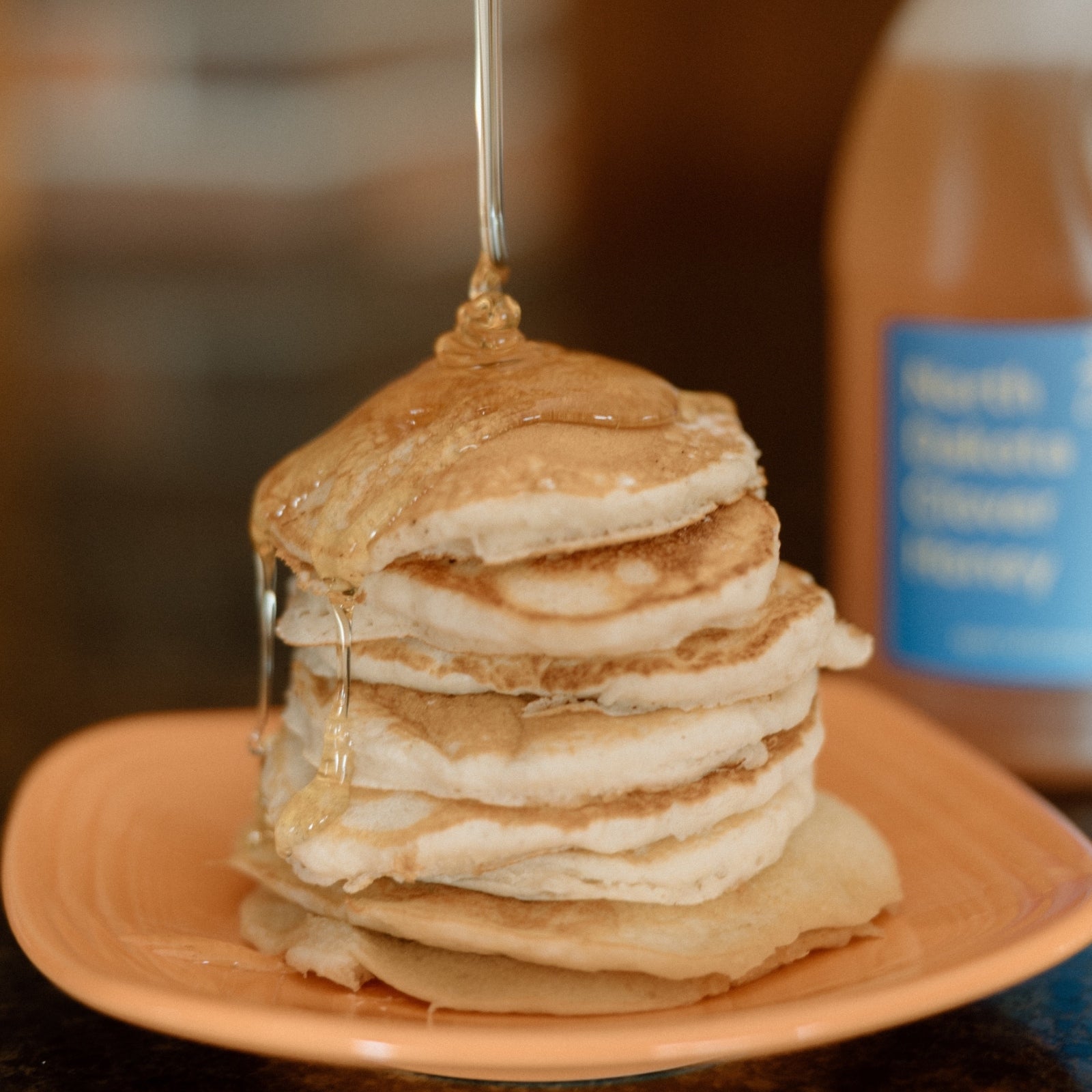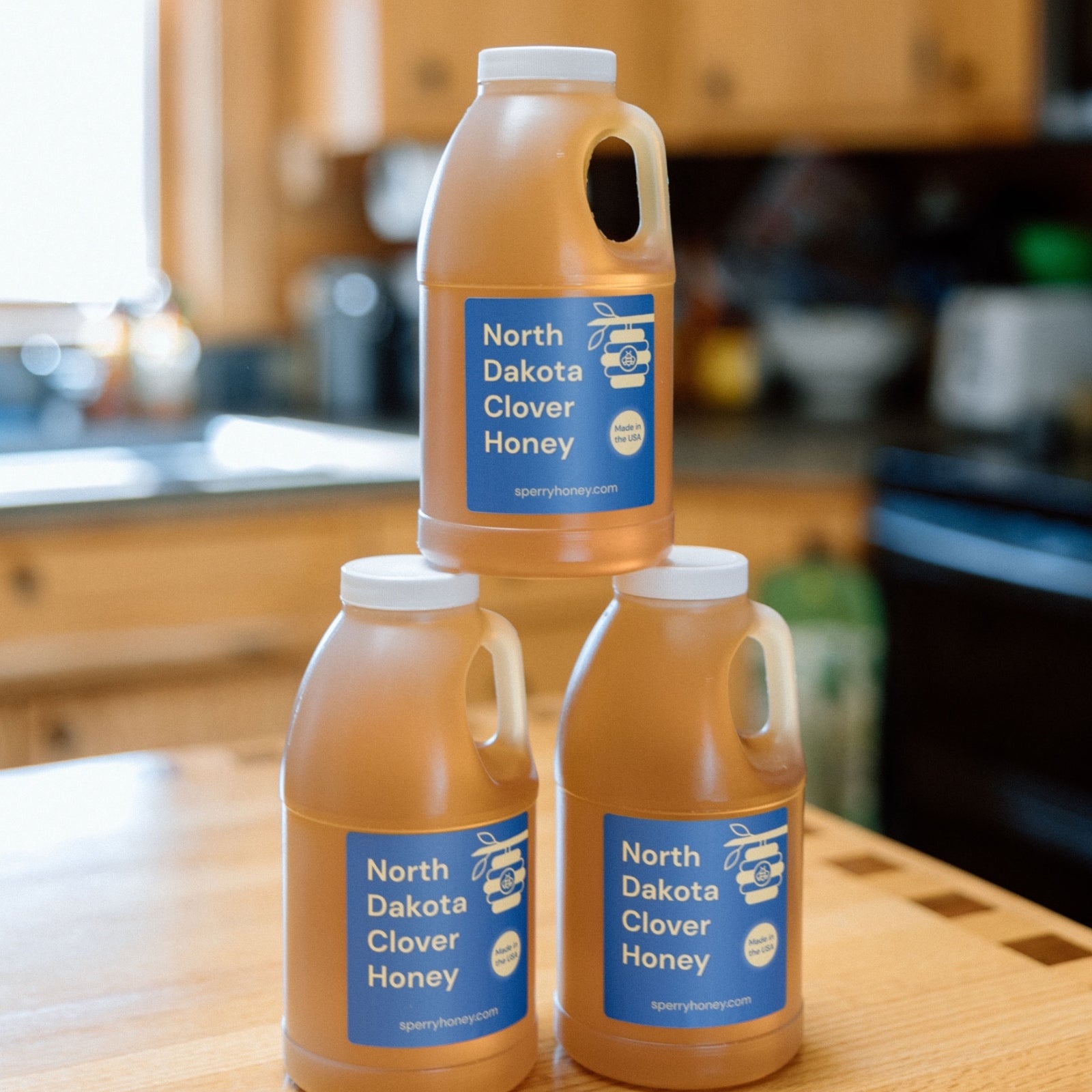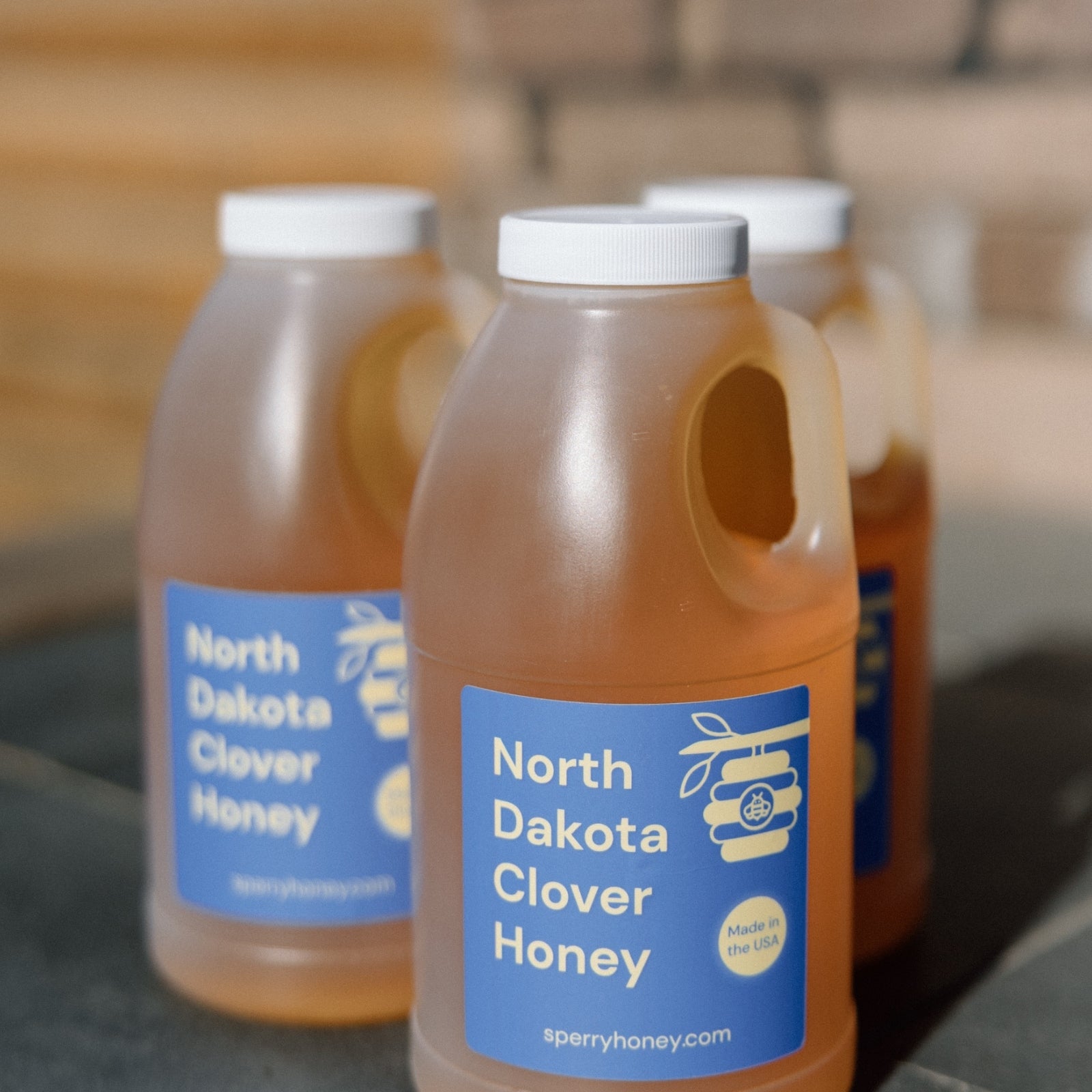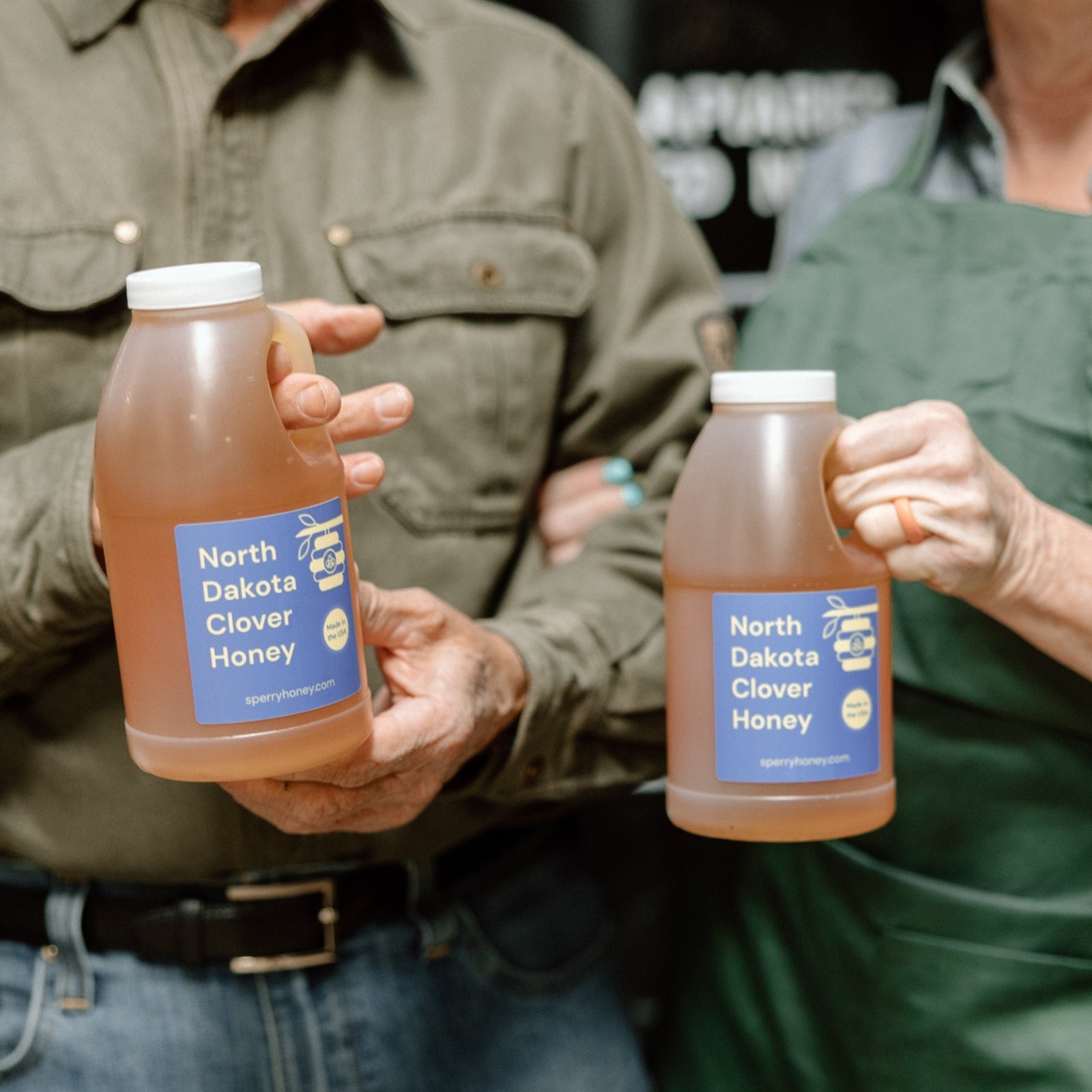Clover Honey
Clover Honey
🍯 US Grade A Clover Honey.
🚫 No fillers.
🚫 No preservatives.
🚫 No sweeteners.
🚚💨 5-7 Day Shipping.
Bulk options are discounted while supplies last. Our 36 pound and 60 pound options come in 12 jar and 20 jar shipments, respectively.
Couldn't load pickup availability
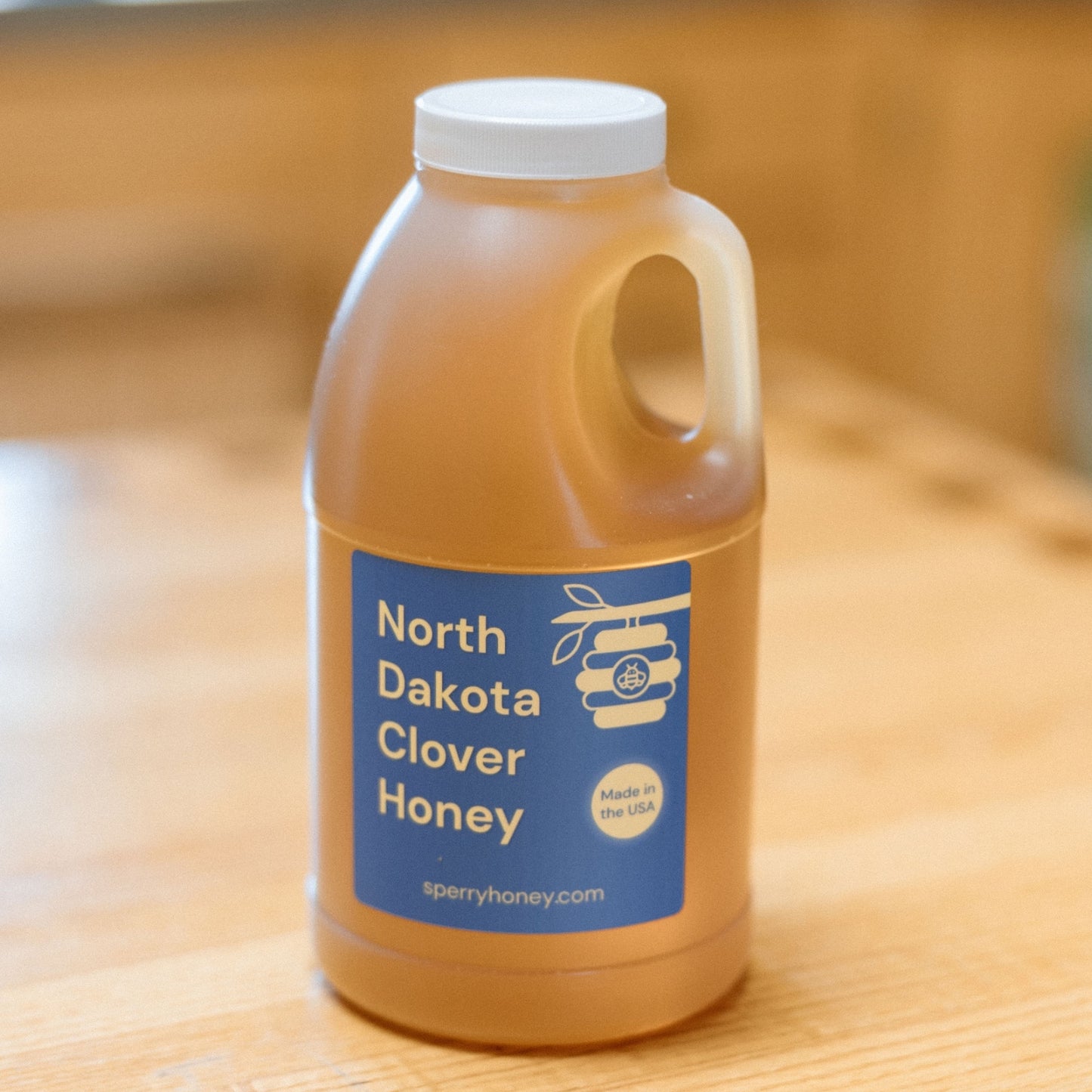
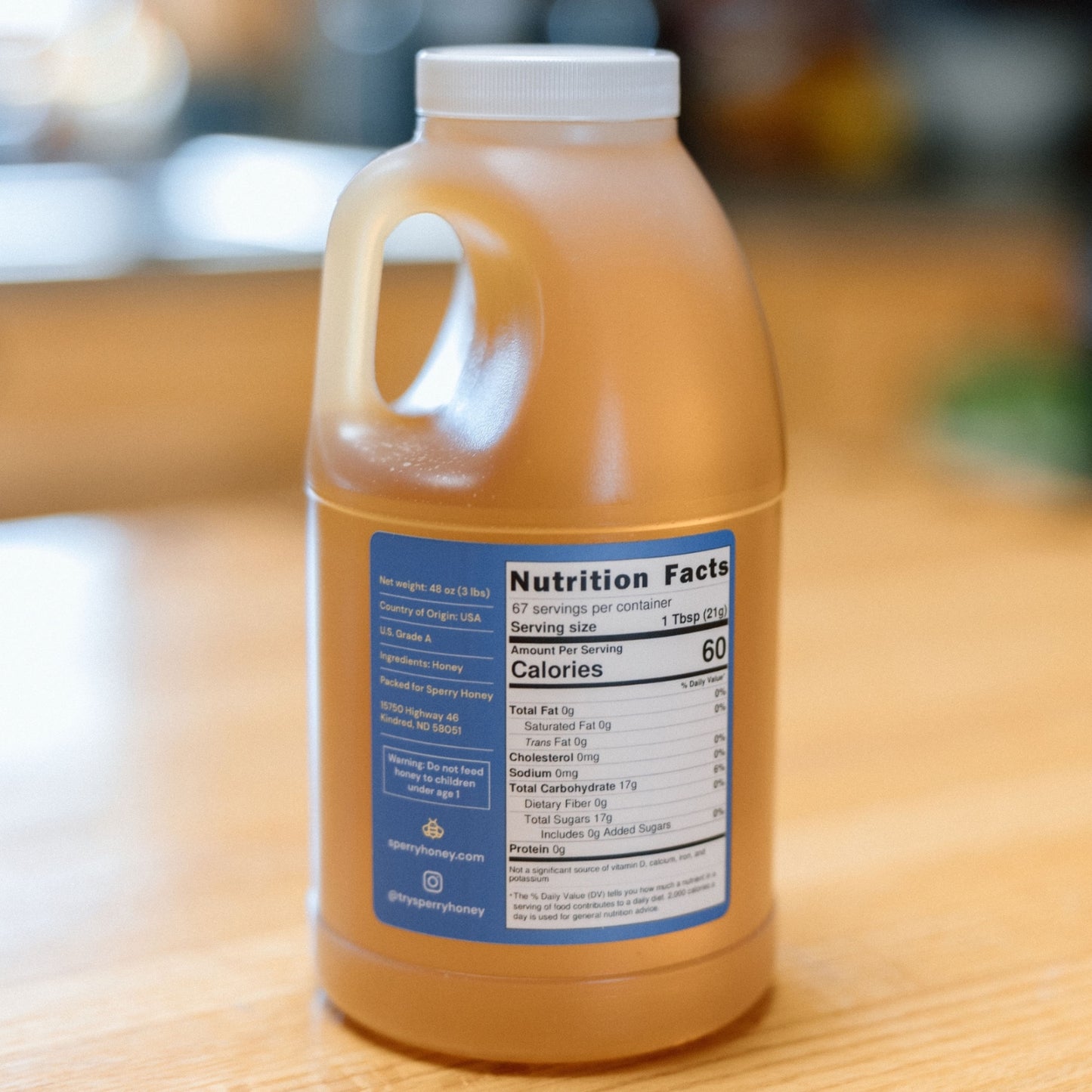
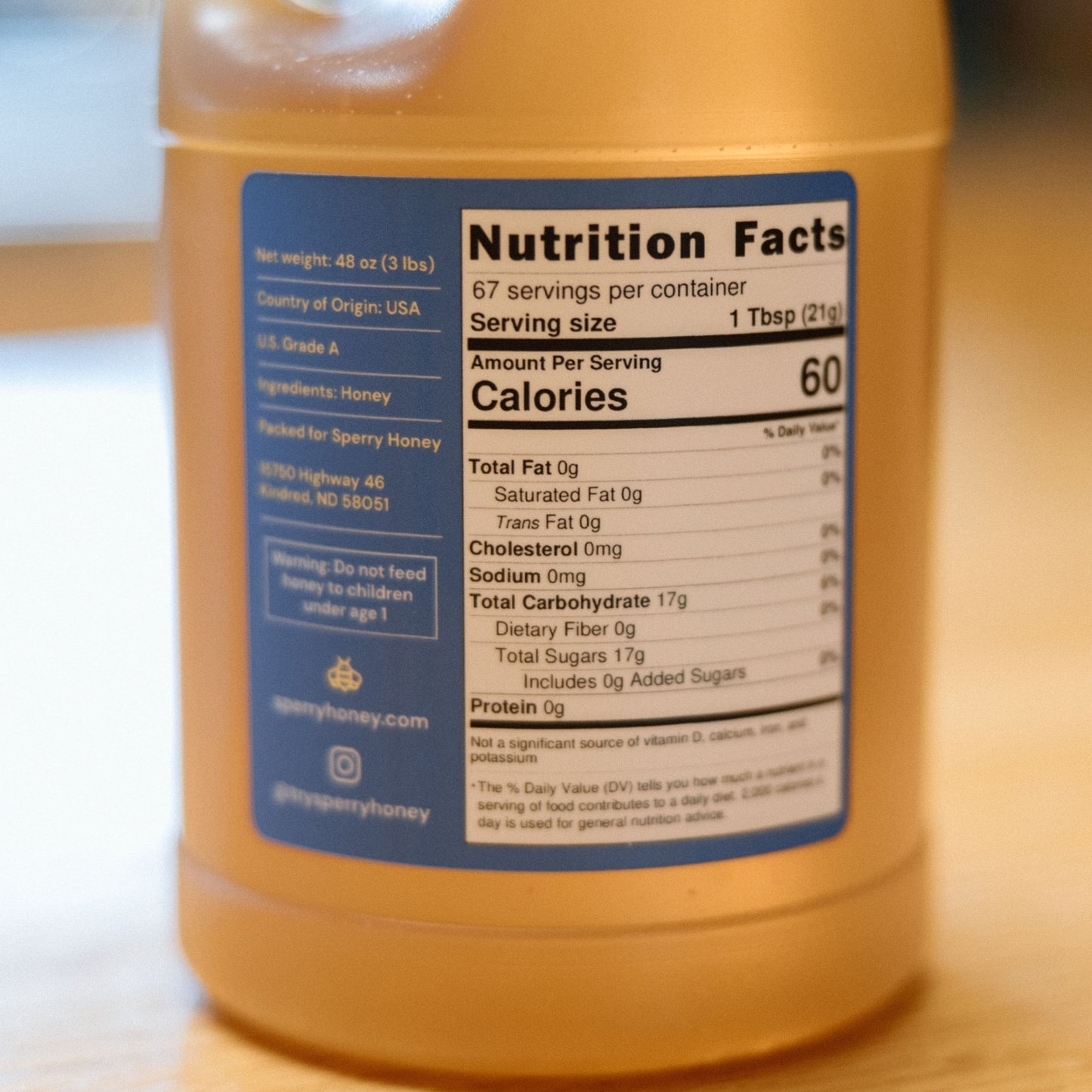
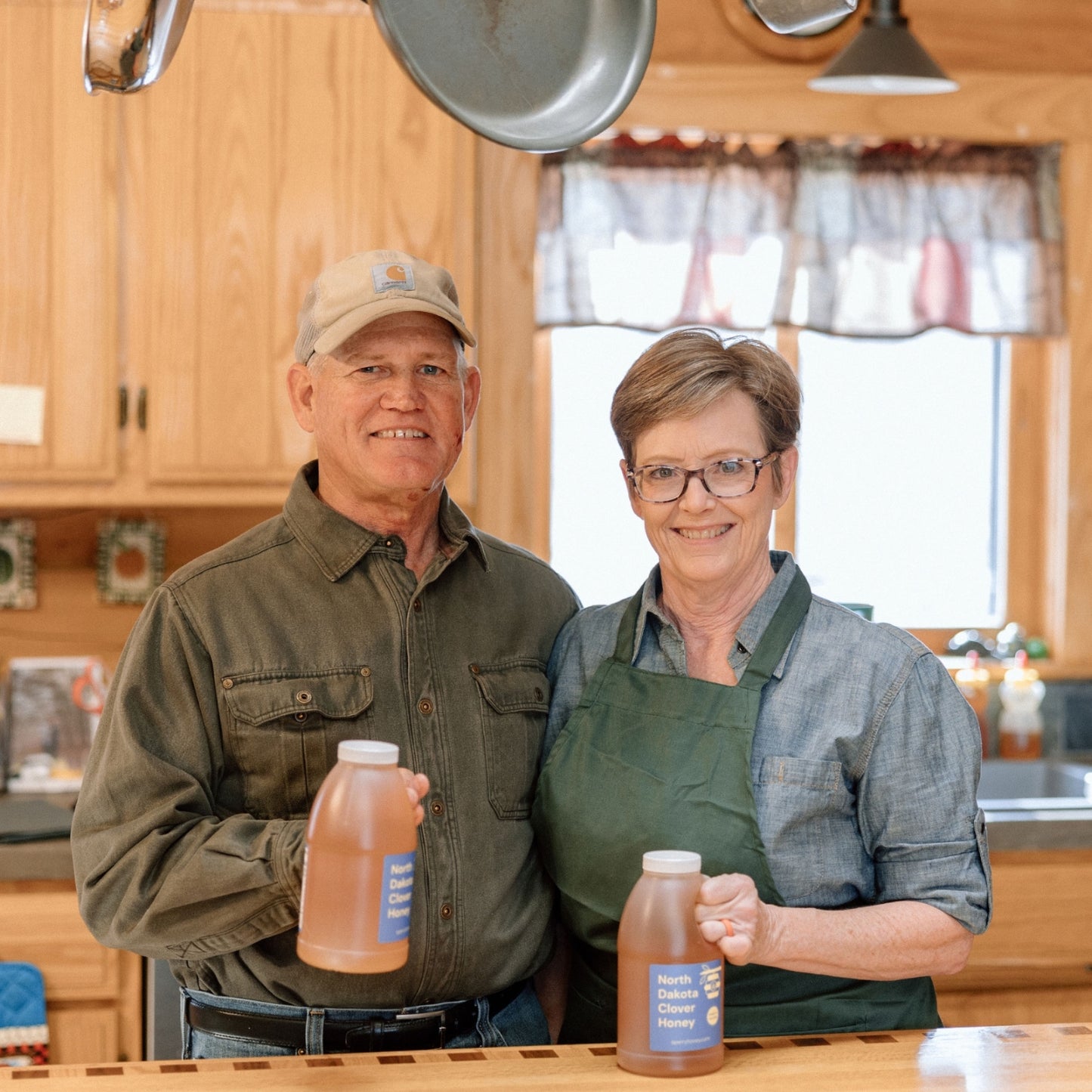


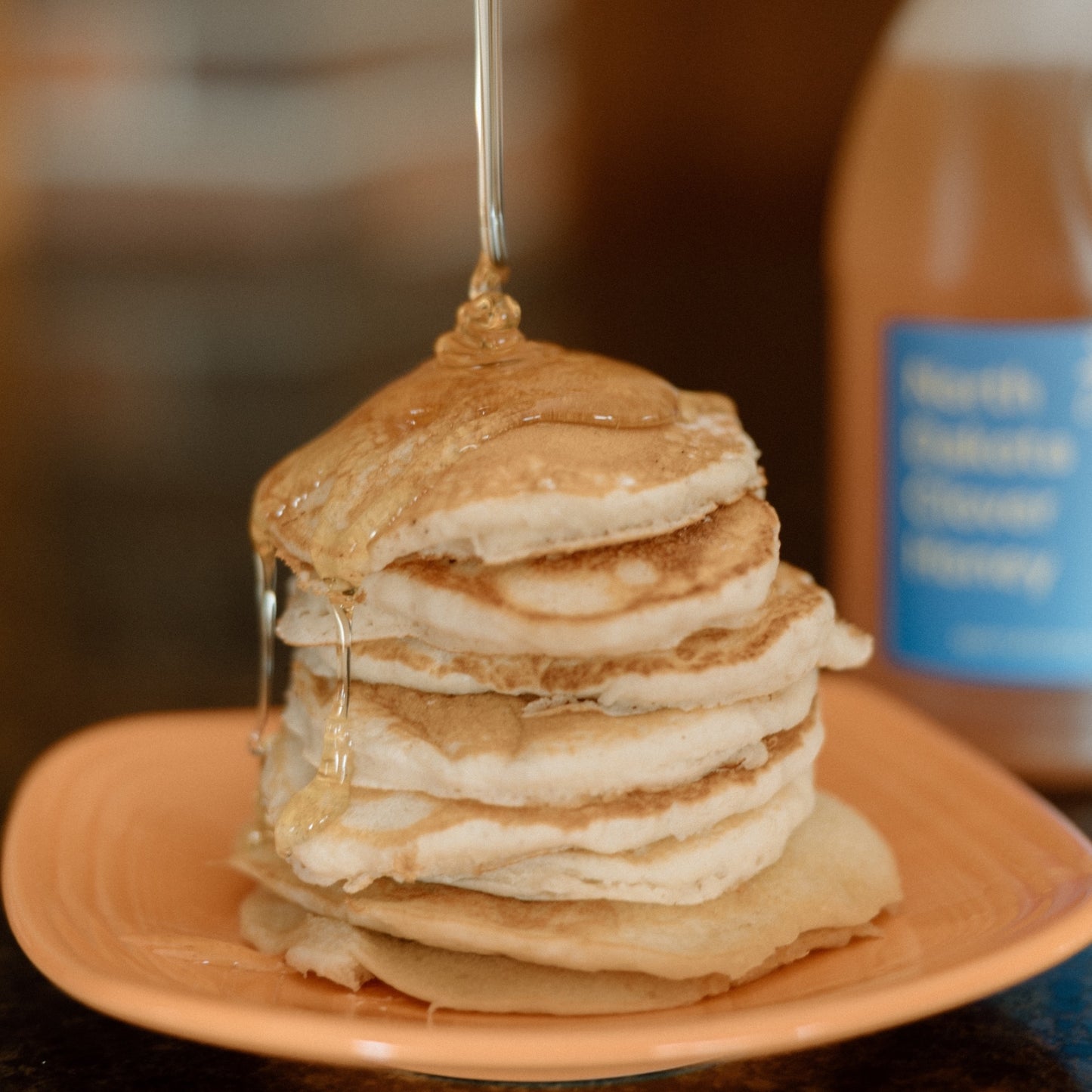
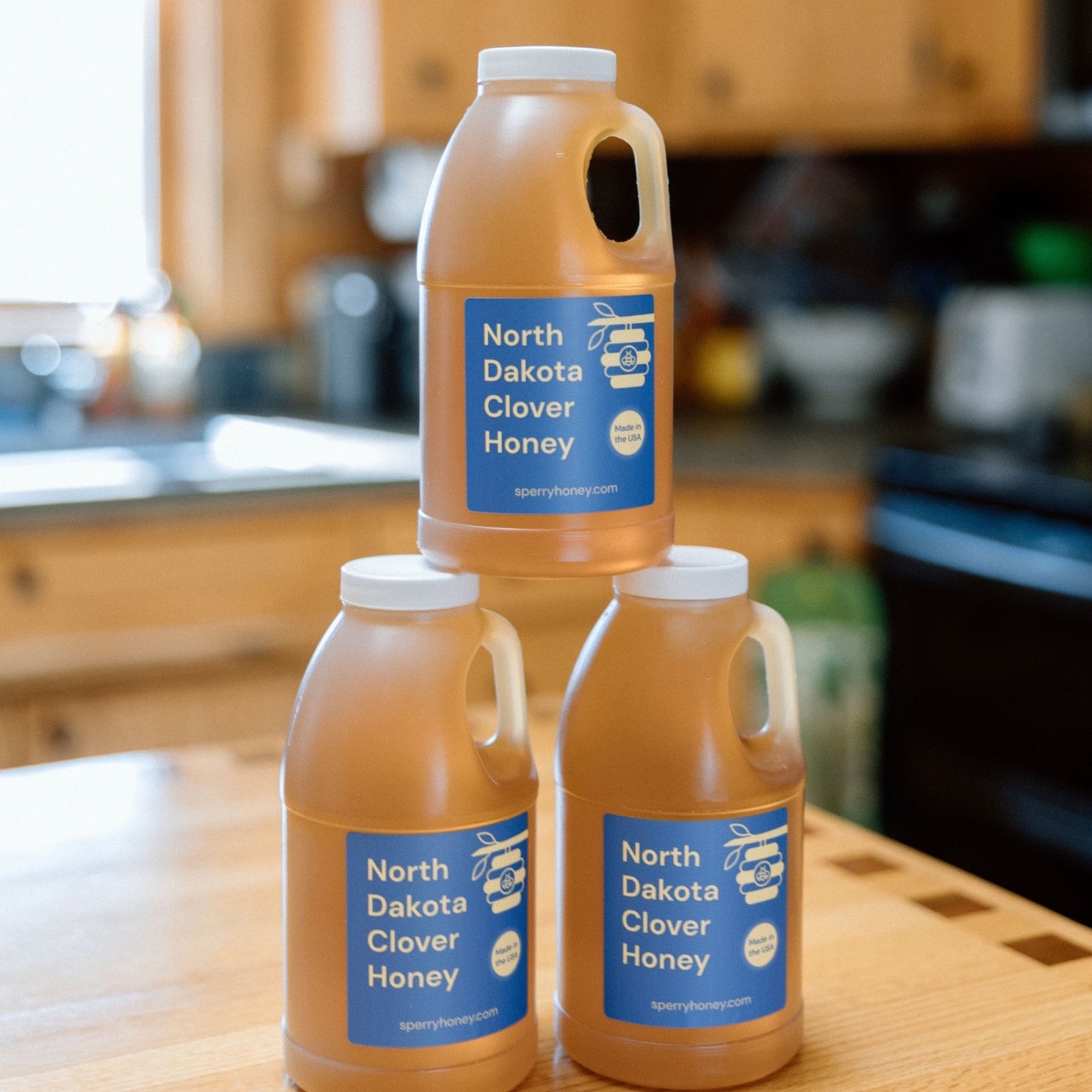
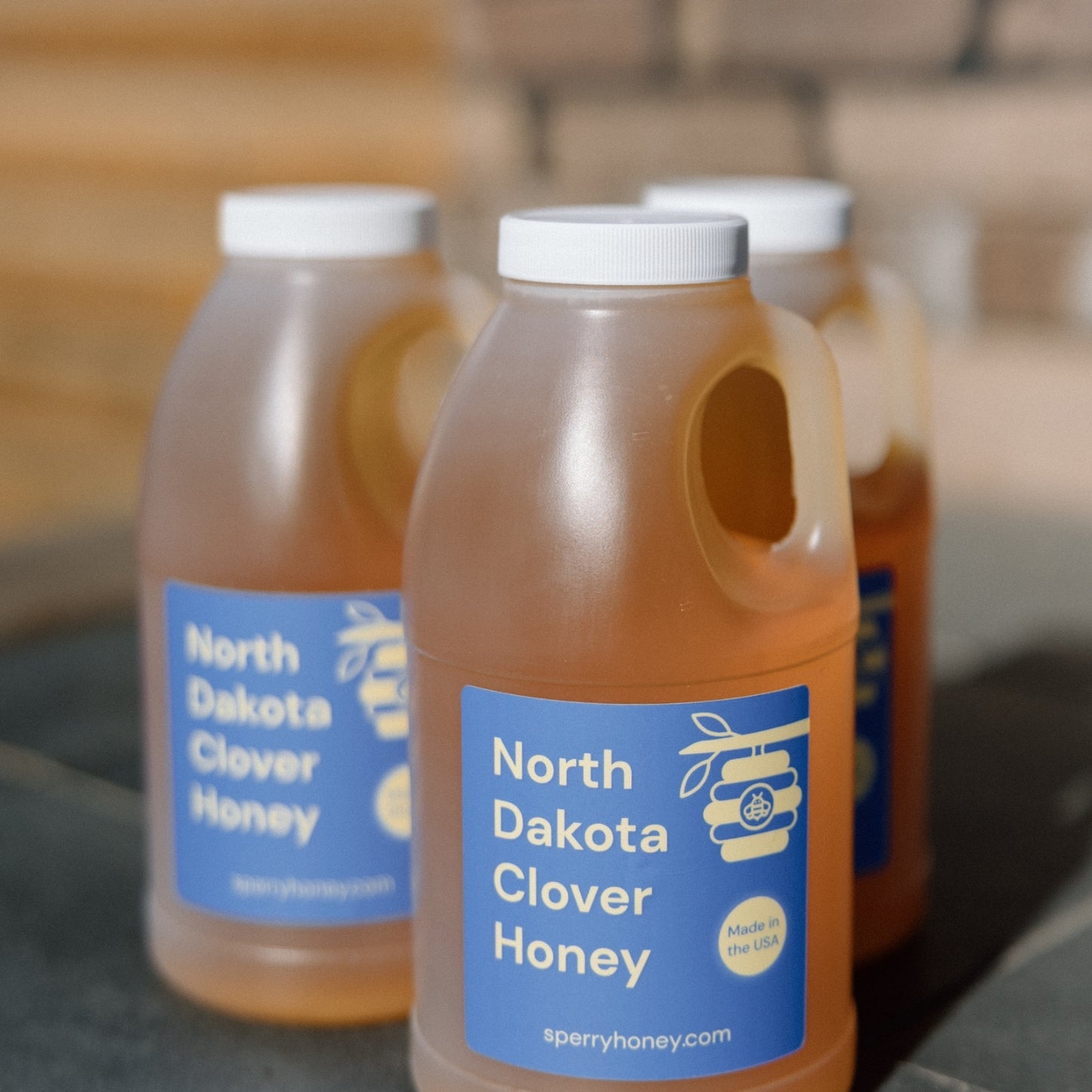
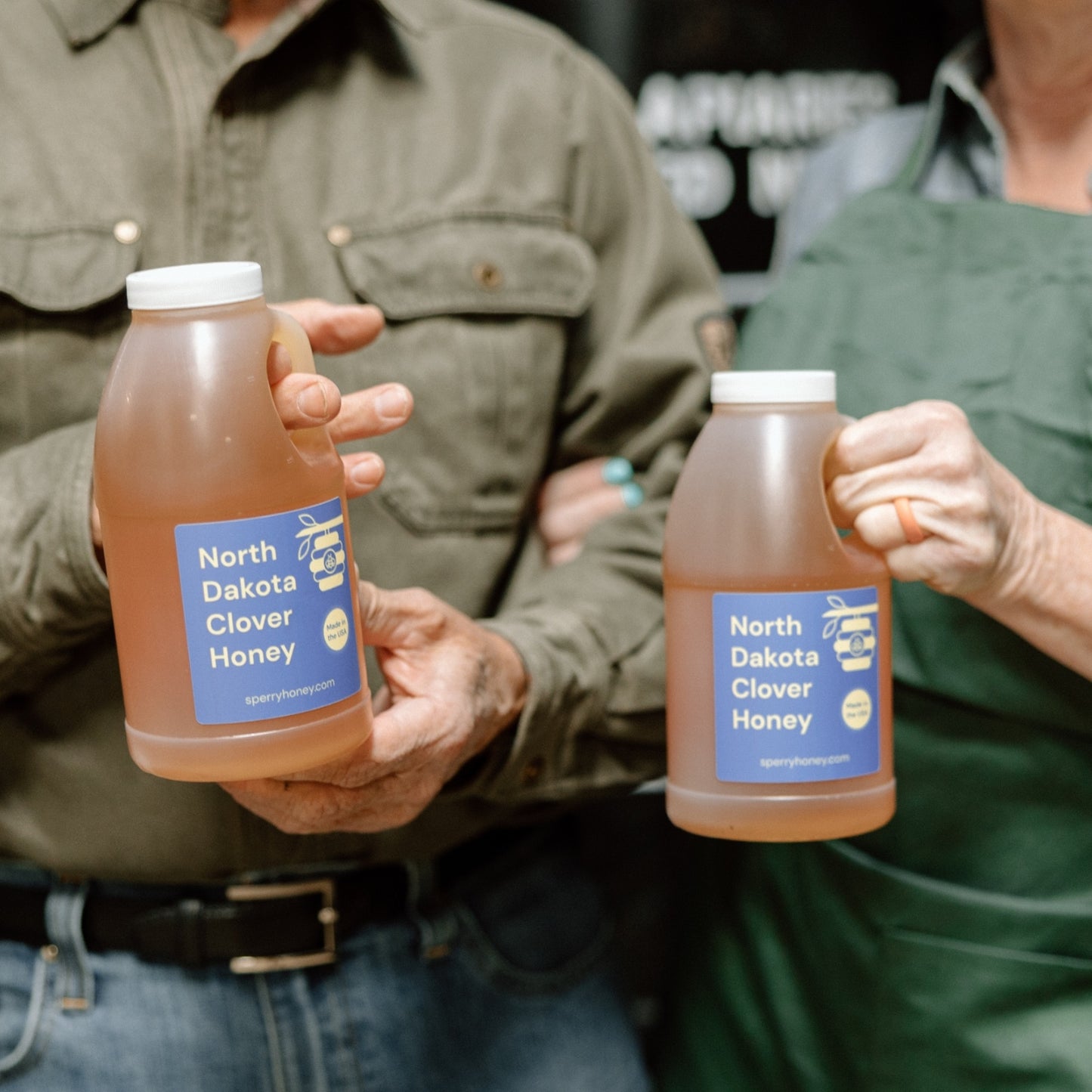
Why Does Our Clover Honey Taste Better?

By Caleb Dueck | March 18, 2024
Well, it's not because we add anything fancy in it. It actually tastes better because we don’t.
You know that honey you buy on the shelf at the grocery store? If it was imported from outside the US, there's a decent chance it's not actually 100% pure honey.
It's not exactly a heroic take, but we believe high fructose corn syrup and artificial sweeteners have no place in honey. Adding those to the honey is gross, unhealthy, and dishonest.
All of our honey is made right here by our North Dakota and Minnesota bees. We don't add anything to our honey, and turns out, that's what makes ours taste great.
Who knew, right?
Customer Reviews
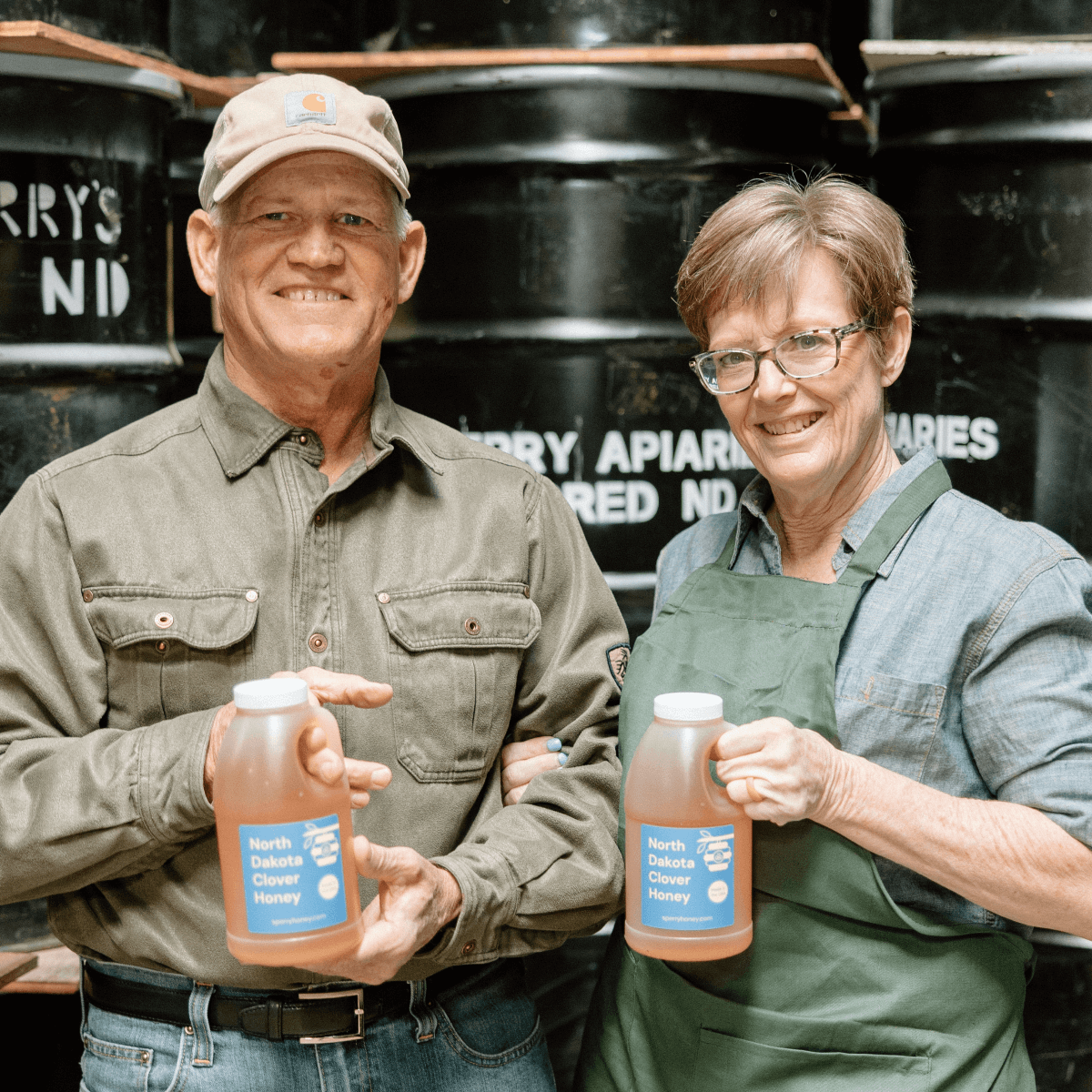
From Our Family To Yours
The Sperry family has been beekeeping since the 1920's. Originally in Kansas, they moved to Kindred, North Dakota in the early 1960's. Mark Sperry grew up around bees as a kid, and now oversees the clover honey production alongside his wife Rebecca. Mark keeps the bees happy & healthy, while Rebecca focuses on fulfilling online orders of clover honey and beeswax.
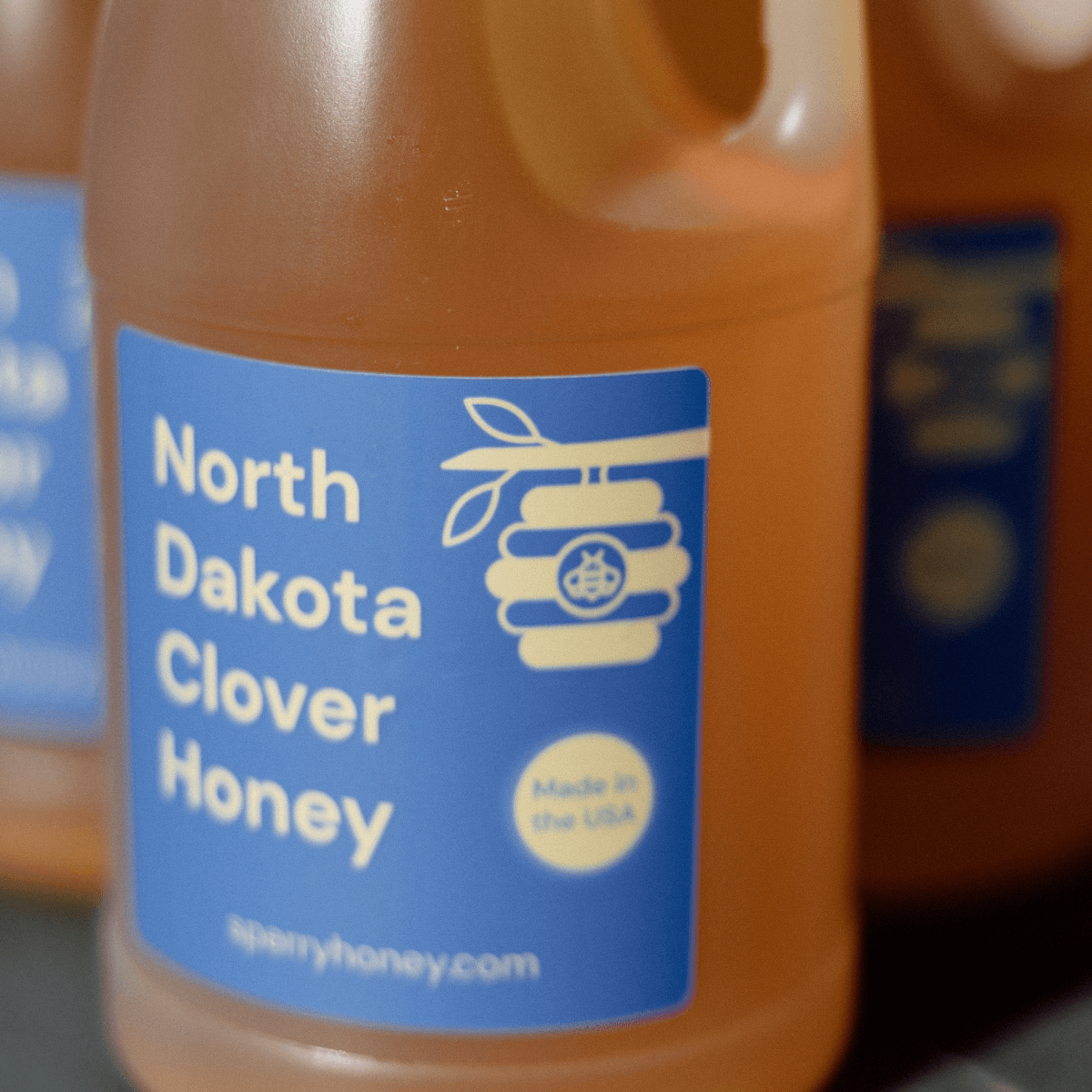
Easy Refunds
If you change your mind after purchase, just email us (hello@sperryhoney.com) and we’ll give you a full refund. If the clover honey has arrived and you haven’t eaten any, you can still get a full refund, so hit us up!
Note: We don't offer refunds for bulk orders.
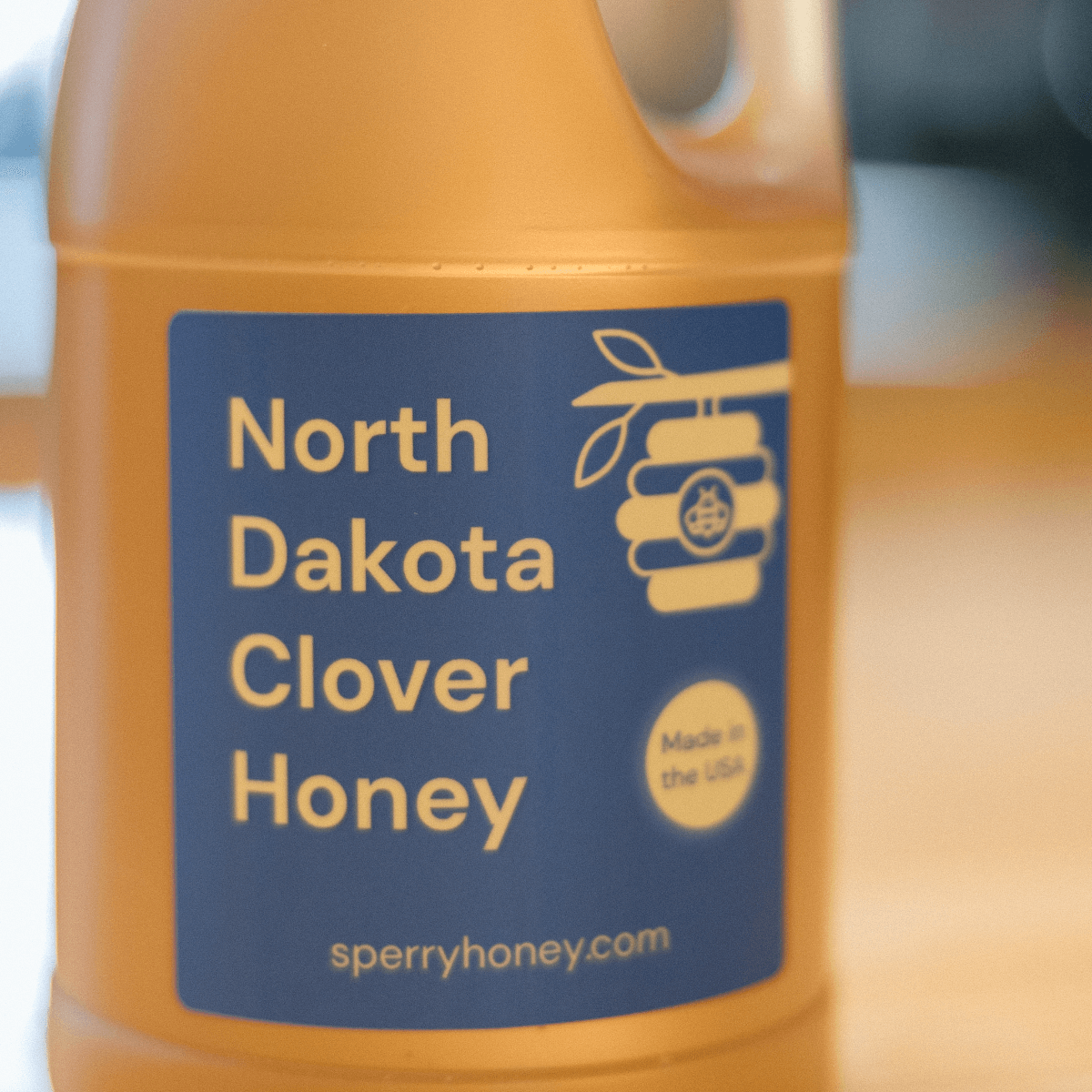
Fast Shipping
We fulfill all of clover pure honey orders in house. As a matter of fact (for the time being) Rebecca Sperry actually boxes up each order and takes them to the post office herself. Each order takes about 1 day to fulfill (bulk orders obviously take a bit longer), and roughly 4-6 days to arrive. If your order hasn't arrived after 10 days, don't hesitate to reach out (hello@sperryhoney.com), and we'll look into the issue for you.
Note: Once we ship the honey with USPS, it's (literally) out of our hands. We're not responsible for stolen packages or damages created during shipping. If you'd like to require signature upon delivery, please choose that option at checkout.
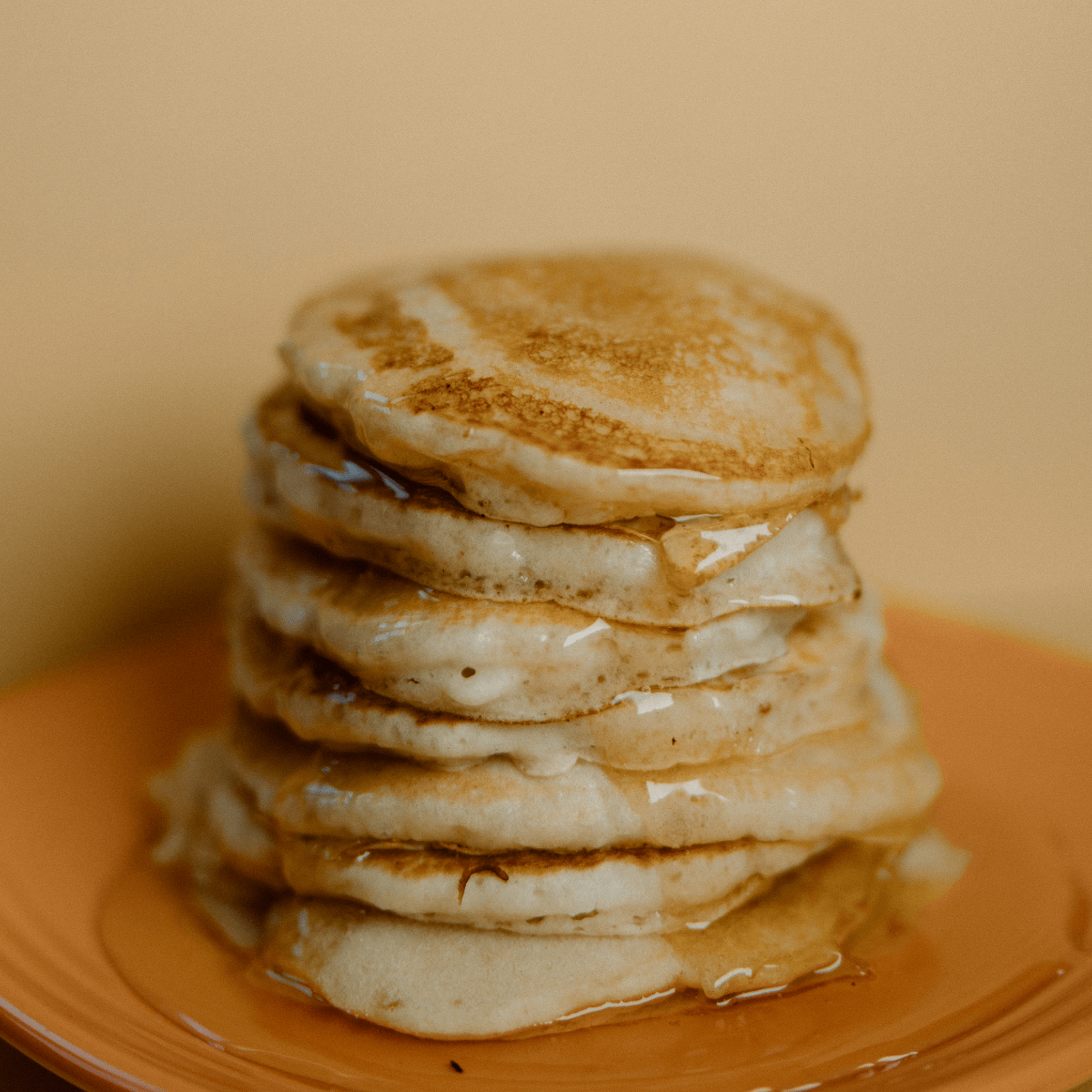
Cut Back on Sugar
Sugar isn't evil, but research shows the typical American consumes way more than they should. Honey is a natural, healthy alternative for those looking to cut back on their sugar in-take.
Also we may be biased, but in our opinion, honey tastes much better than alternative sweeteners like stevia. Clover honey can be used in coffee & tea, and works great in recipes for dinner, dessert, and more!
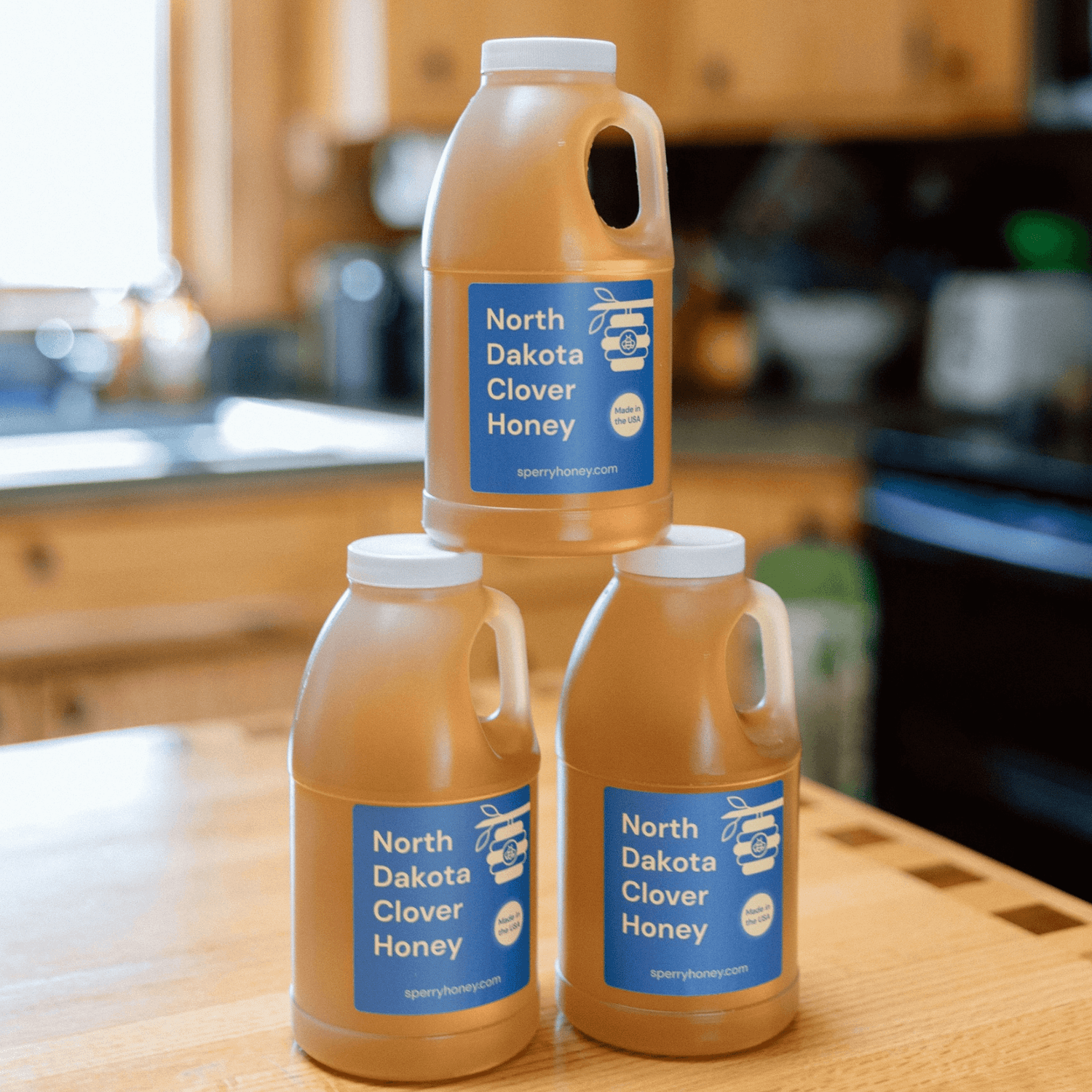
Bulk Honey at a Discount
We offer strong discounts for bulk clover honey orders. The bottle size is small enough for you to easily store many bottles, while also being large enough that you won't be switching between too many bottles too fast. Clover honey works great in recipes since it has a nice, smooth flavor without being too bold. Our bulk honey is a great option for restaurants, coffee shops, bakeries, breweries, and food manufacturers!
Honey FAQs
Is all of your honey available for online sale?
As a matter of fact, no. We're used to selling our honey to local retailers, and selling honey on a website is fairly new to us. That said, we've only set aside about 1/6th of our 2023 honey supply for online sale. Once we run out, you'll have to wait until Fall 2024 to get your hands on more. That said, you might want to snag some before it's too late. Just saying.
Is your honey raw or organic?
Raw?
While we'd love to sell raw in the future, we currently heat and filter our honey, meaning ours is not raw. Always do your research on brands claiming their honey to be raw, and make sure to verify you're actually buying raw honey.
It's worth mentioning that as great as raw honey is, it will crystallize faster than our honey. The crystallization process is completely normal and safe, but it's not recommend for use in baked goods or other recipes requiring high temperatures.
Organic?
No, and we're wary of most organic honey claims. Bees travel many miles to forage on various flowers, and we would have to verify that every nearby farmer avoids the use of pesticides or chemicals on crops. Here's a great blog post from Local Honey Finder to explain further.
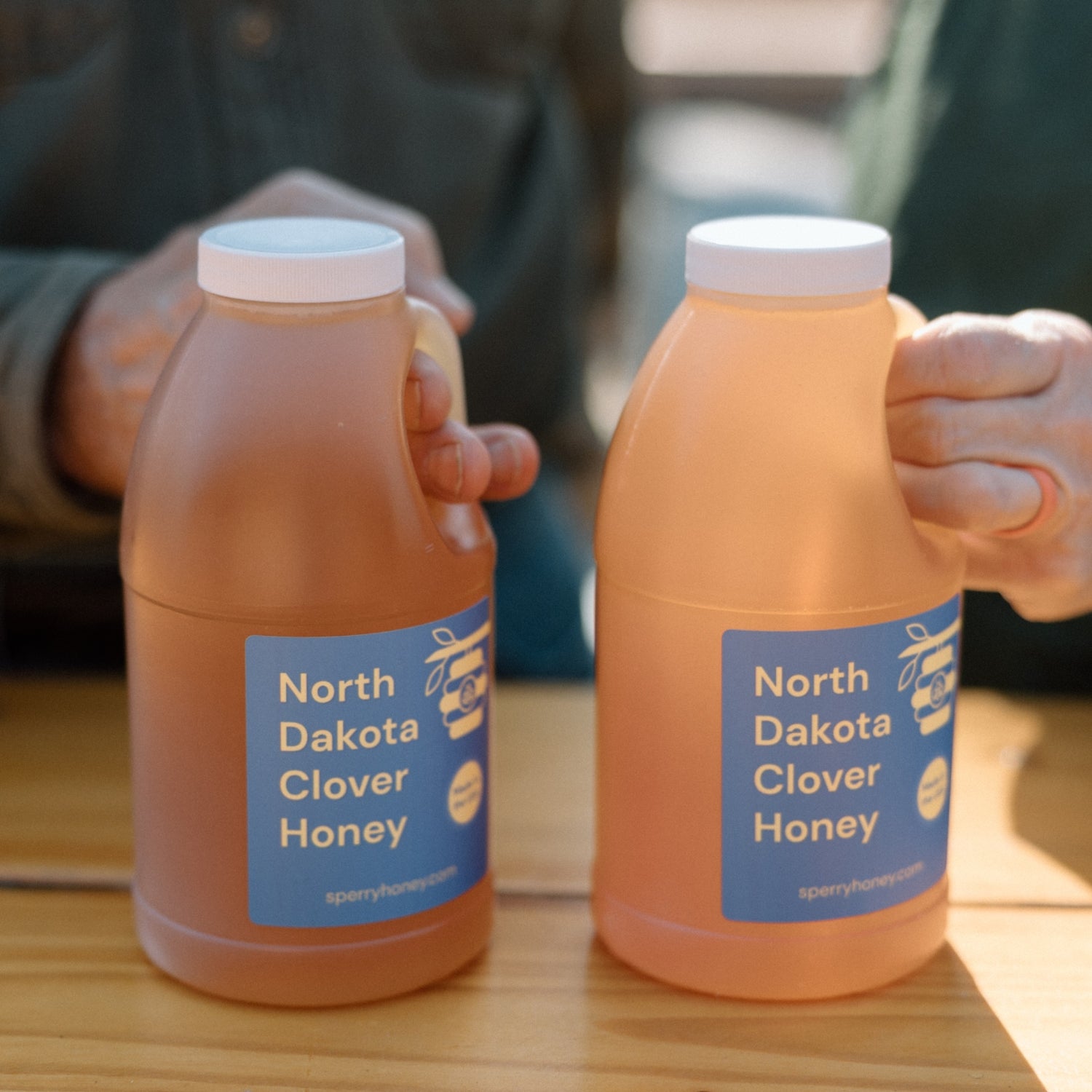
What is Clover Honey?
When bees gather nectar from the blossoms of sweet clover, they produce clover honey. The bees visit clover flowers and extract the nectar from the clover blossoms before returning to the hive... where they deposit this nectar into honeycomb cells.
Our bees roam around the Red River Valley, with our hives located in North Dakota and Minnesota. They forage on sweet clover, as well as fruit trees, dandelions, leafy spurge, alfalfa, basswood, and sunflowers. You can't exactly control where bees will pollinate 😊 but we estimate that sweet clover represents about 75% of the floral source of our honey. Our clover honey has a rich, sweet flavor that's tastier than the (mostly) fake honey you might find on your grocery store shelves.
Sadly, imported honey often contains artificial sweeteners and unwanted additives (such as high fructose corn syrup), as importers try to cut costs by diluting their product. This is more common than most people realize, and that's why it's important to always buy honey produced here in the United States.
Get 15% Off.
Sign up below to save an additional 15% on your honey! Unsubscribe anytime.

